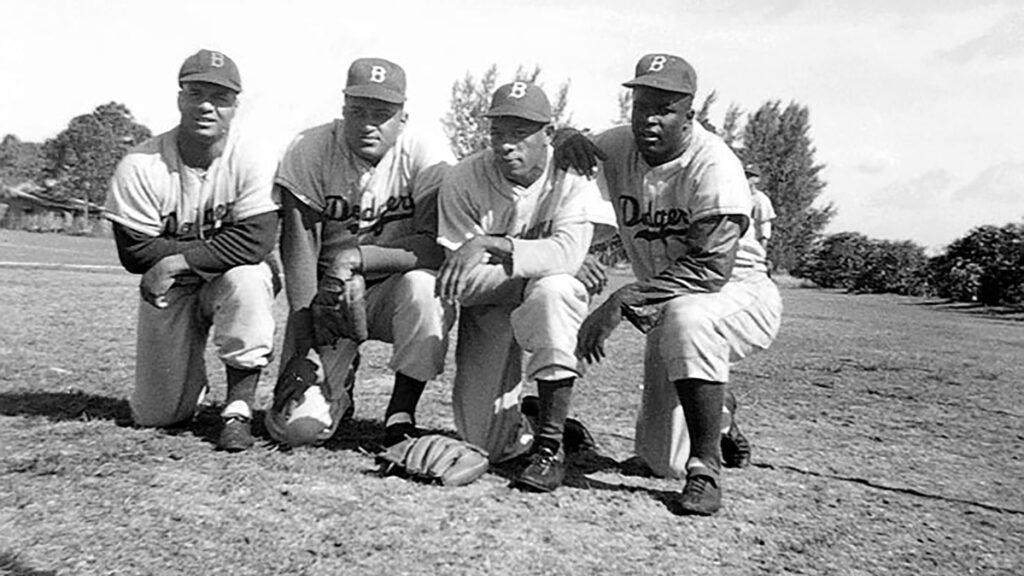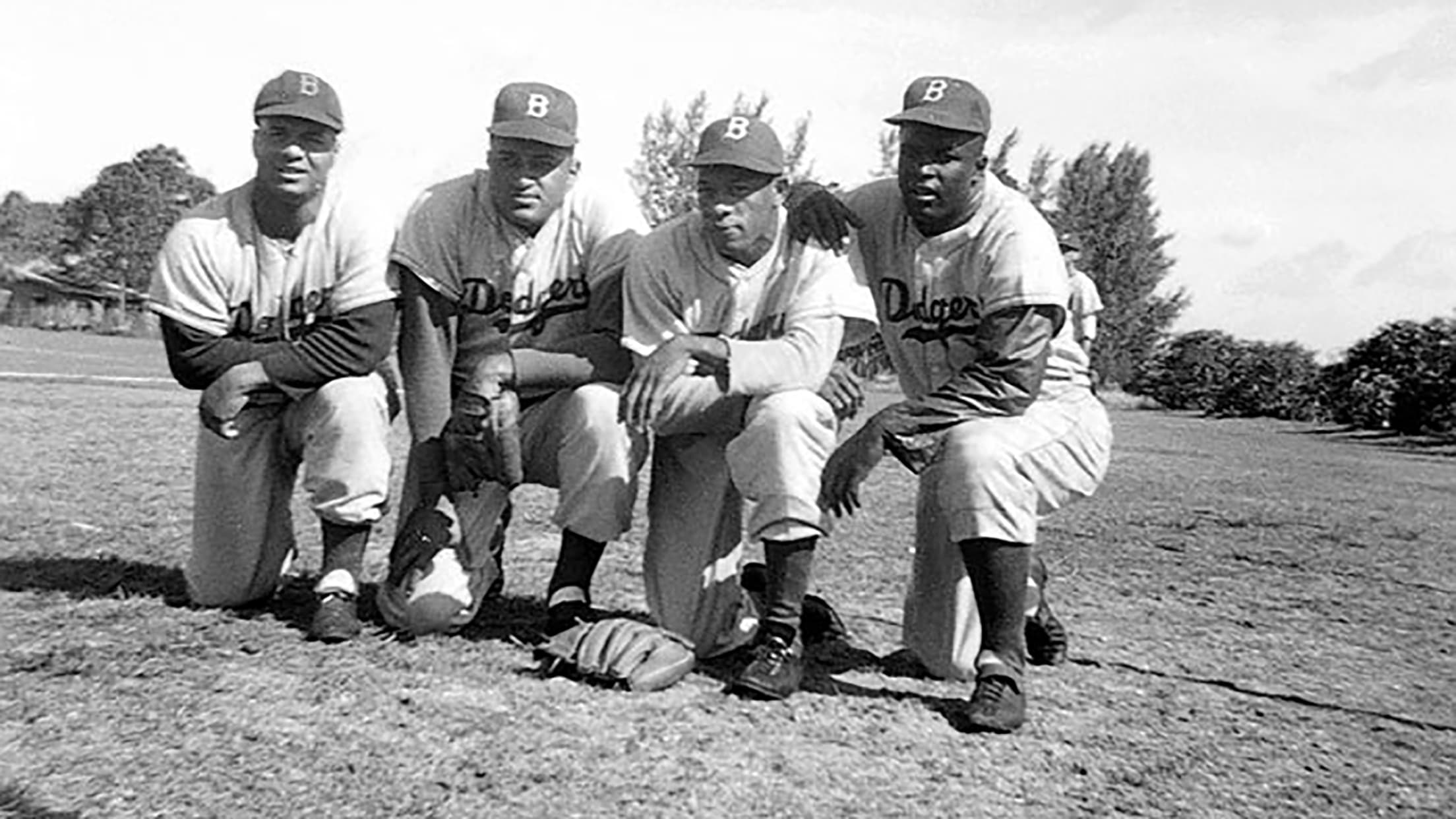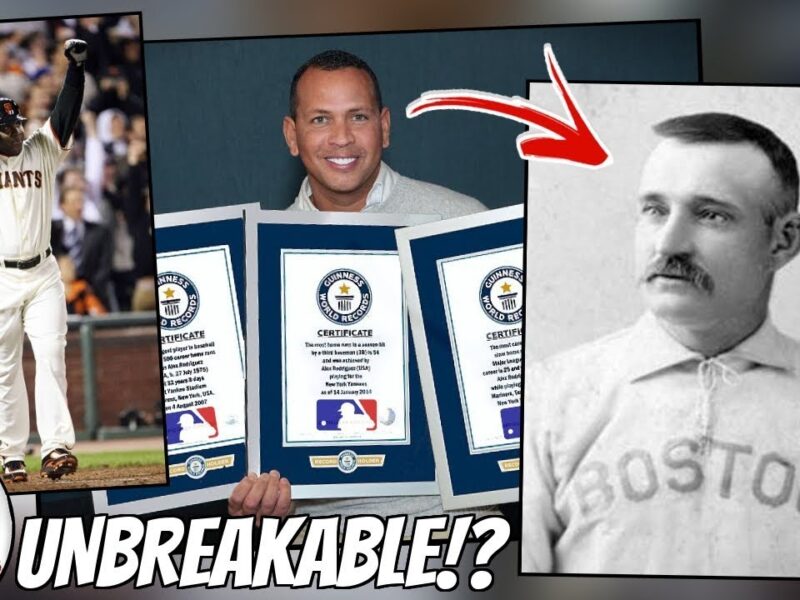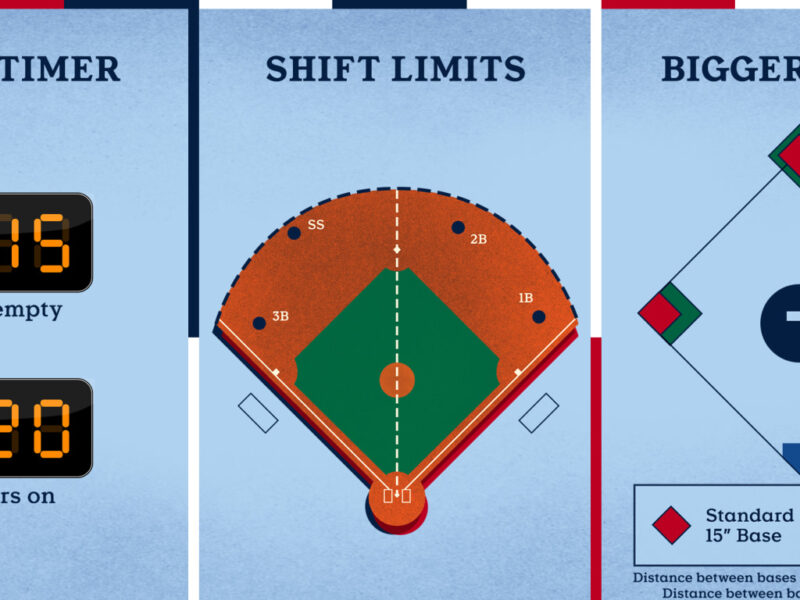Baseball, often called America’s pastime, holds a mirror to the nation’s history, reflecting both its triumphs and its struggles. Few chapters are as significant, painful, and ultimately transformative as the story of its integration. While one name stands above all others as the central figure, the journey to break baseball’s color line was paved by decades of exclusion and followed by years of courageous steps by many pioneers.

The Unwritten Rule: Baseball’s Color Line
For nearly half a century, from the late 1880s until 1947, an unwritten but rigidly enforced “gentlemen’s agreement” among team owners barred Black players from participating in Major League Baseball and its affiliated minor leagues. This segregation forced incredibly talented Black athletes into parallel leagues, most notably the Negro Leagues.
The Negro Leagues thrived, showcasing extraordinary talent like Satchel Paige, Josh Gibson, Cool Papa Bell, Oscar Charleston, and countless others who, denied the chance to compete on the biggest stage, created their own vibrant baseball ecosystem. They barnstormed, played in front of passionate crowds, and proved their abilities were often equal to, if not greater than, their white counterparts in the majors.
Branch Rickey’s “Great Experiment” and the Chosen One
The impetus for change came from Branch Rickey, the visionary general manager of the Brooklyn Dodgers. Rickey believed segregation was morally wrong and also saw the untapped reservoir of talent in the Negro Leagues as a competitive advantage. He meticulously planned what he called the “great experiment,” seeking not just a talented player, but a specific kind of man.
He needed someone with exceptional athletic ability, unquestionable character, and, crucially, the strength and discipline not to retaliate against the inevitable storm of racist abuse he would face. In 1945, he found his man: Jackie Robinson.
Robinson was a multi-sport star at UCLA, an Army veteran, and a standout shortstop for the Kansas City Monarchs in the Negro Leagues. In their famous meeting, Rickey bluntly warned Robinson of the insults, threats, and potential physical violence he would endure, demanding Robinson promise to turn the other cheek. Robinson, understanding the weight of the moment, agreed.
April 15, 1947: A Seismic Shift
After a year with the Dodgers’ top minor league affiliate in Montreal (where he dominated), Jackie Robinson broke the color barrier on April 15, 1947, starting at first base for the Brooklyn Dodgers at Ebbets Field.
The abuse was immediate and relentless: racial slurs from opposing dugouts and fans, pitchers throwing at his head, runners trying to spike him, hate mail, and death threats targeting him and his family. Teammates were initially hesitant, with some even petitioning to have him removed. But Robinson endured it all with remarkable dignity and grace, letting his stellar play be his response.
His courage, supported by Rickey, manager Leo Durocher (who famously defended Robinson to protesting teammates), and allies like shortstop Pee Wee Reese (whose public gesture of putting his arm around Robinson in Cincinnati is legendary), began to slowly win over teammates, fans, and eventually, much of the nation.
Jackie’s Impact:
Robinson wasn’t just a symbol; he was a phenomenal player. He won the inaugural Rookie of the Year award in 1947, was named National League MVP in 1949, became a six-time All-Star, and helped lead the Dodgers to six pennants and their only World Series title in Brooklyn (1955). His daring baserunning and clutch hitting electrified crowds. He proved unequivocally that Black players belonged.
Beyond Jackie: Opening the Floodgates (Slowly)
While Robinson broke the national barrier, the integration of baseball wasn’t instantaneous. Just weeks after Robinson’s debut, Larry Doby bravely integrated the American League with the Cleveland Indians on July 5, 1947, facing similar hostility but without the same level of institutional support Robinson initially had.
Over the next few years, other courageous Black players followed, often facing intense prejudice:
- Hank Thompson and Willard Brown (St. Louis Browns, 1947)
- Roy Campanella and Don Newcombe (Brooklyn Dodgers, joining Robinson)
- Monte Irvin and Willie Mays (New York Giants)
- Minnie Miñoso (Chicago White Sox – considered the first Afro-Latino star)
- Ernie Banks (Chicago Cubs)
- Hank Aaron (Milwaukee Braves)
Integration proceeded unevenly. Some teams eagerly signed Black talent, while others resisted. The Boston Red Sox became the last pre-expansion team to integrate, adding Pumpsie Green in 1959, a full 12 years after Robinson’s debut.
The Wider Significance and Legacy
The integration of baseball was a landmark event not just for sports, but for American society. It predated the Brown v. Board of Education Supreme Court decision and the major milestones of the Civil Rights Movement. Robinson, Doby, and the other pioneers became powerful symbols of courage and perseverance, demonstrating the absurdity and injustice of segregation on a highly visible national stage.
Their success irrevocably changed the game, bringing an influx of incredible talent that elevated the level of play across the league.
Today, Jackie Robinson’s legacy is honored every April 15th when all MLB players wear his retired number 42. While challenges regarding minority representation in playing, coaching, and executive ranks persist, the initial breaking of the color barrier remains one of baseball’s – and America’s – most profound and enduring stories of progress against overwhelming odds. It’s a testament to courage, conviction, and the undeniable power of talent to overcome prejudice.
What does Jackie Robinson’s story mean to you? Who are other integration pioneers you admire? Share your thoughts on this pivotal chapter of baseball history.


